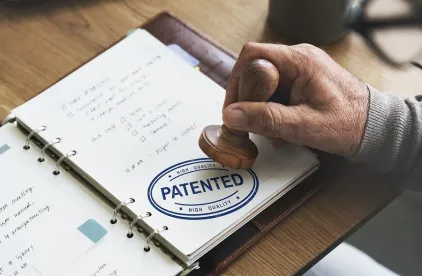The recent denial of certiorari in Willowood without Supreme Court comment adds another tile to the mosaic of precedent considering divided (induced, contributory) infringement of method patents; Syngenta Crop Prot., LLC v. Willowood, LLC, 944 F.3d 1344 (Fed. Cir. 2019). The Supreme Court’s most recent decision on the topic is Limelight Networks, Inc. v. Akamai Techs., Inc., 572 US 915 (2014)). In Limelight, which bounced a couple of times at the Federal Circuit, the Supreme Court phrased and answered the question—again with a "no"—"whether a defendant may be liable for inducing infringement of a patent under 35 U.S.C. § 271(b) when no one has directly infringed the patent under 35 U.S.C. § 271(a) or any other statutory provision.” 572 U.S. at 917; (35 U.S.C. § 271).
According to the Federal Circuit in Willowood, however, although infringement in the US can sometimes be sufficiently divided to avoid “regular” infringement (35 U.S.C. § 271(a)) a process carried out beyond US borders, and otherwise “divided” into different-party steps, can still produce a product that infringes 35 USC 271(g).
The Limelight court, through Justice Alito, seemed to be saying that under § 271(a) there are three possibilities: direct infringement (all of the steps in the claim), no infringement (none of the steps in the claim), and something undefined (some, but not all, of the steps in the claim).
Because the range of possibilities between "none of the steps" and "all of the steps" would seem to be unclear in almost all cases, the Limelight Court understandably settled on "all steps; otherwise non-infringing." Thus, two of the three possibilities are non-infringing.
Willowood, however, produced a different result.
Syngenta sued Willowood for several reasons. Syngenta sells plant fungicides into the agricultural market, two of which incorporate azoxystrobin as an active ingredient. According to Syngenta, its QUADRIS® fungicide controls "many diseases including strobilurin-resistant frogeye leaf spot," and its QUILT XCEL® fungicide "helps plants withstand wet conditions" (https://www.syngenta-us.com/fungicides/quadris). A University of Nebraska report states that yield loss estimates can be as high as 30% nationally from frogeye leaf spot. In turn, the Department of Agriculture describes the Farm cash value of the US soybean market as $31.2 billion in 2019; USDA Soybean Market.
Willowood sells identical compositions with identical ingredient labels under the names “Azoxy 2SC” and AzoxyPro Xtra.” The agricultural market recognizes these as identical or comparable to the Syngenta brands (e.g., Reichman Sales).
One of Syngenta’s method patents recited a two-step process (etherification followed by condensation) for making azoxystrobin and another method patent recited a defined percentage of a catalyst used to accelerate the condensation step.
Syngenta also sued Willowood for copyright infringement of its product labels and infringement of “compound” patents. The copyright claim deserves its own copyright law treatment, but for now the issue is whether, for highly regulated content (the labels of fungicides), do Willowood’s identical labels for its azoxystrobin fungicides infringe any copyright(s) to which Syngenta may be entitled? The District Court denied all of Syngenta’s copyright claims, on the grounds that federal labeling requirements for pesticides simply precluded copyright protection for the "required elements" of such labels. The Federal Circuit found this conclusion to be too broad, and remanded the case for a closer look at Syngenta’s possible copyright claims.
Turning to divided infringement of the method patents, “Willowood” was technically four companies, one of which (“Willowood China”) purchased azoxystrobin from a Chinese supplier, then sold it to “Willowood USA,” which then imported the composition into the US.
Willowood therefore addresses a similar, but slightly different important question than did Limelight (and one of first impression): whether 35 U.S.C. § 271(g) (which defines products made overseas by methods recited in a US patent claim to be infringing) requires that—as in Limelight—every step of the claimed process to be performed by, or attributable to, a single entity.
The Federal Circuit decided to focus on the word "product" in § 271(g) and held that the imported product would infringe regardless of whether or not a single entity carried out all of the infringing steps overseas.
(g) Whoever without authority imports into the United States or offers to sell, sells, or uses within the United States a product which is made by a process patented in the United States shall be liable as an infringer, if the importation, offer to sell, sale, or use of the product occurs during the term of such process patent. . . .
The court's logic was as follows. The District Court had decided that § 271(g) had the same single entity requirement as § 271(a). The Federal Circuit, however, began with an obligatory statement about proper statutory interpretation, and then pointed out that the literal terms of § 271(g) referred to "a product," and thus § 271(g) covered products rather than methods.
The Federal Circuit then drew the distinction between § 271(a) (single entity requirement) and § 271(g) (no single entity requirement) by explaining that § 271(a) creates liability when the infringer makes, uses, sells, or imports the patented invention.
In slight contrast, § 271(g) defines infringement by the act of importing a product rather than a claimed invention. In other words § 271(g) defines infringement based on the product and not from the steps of making the product and thus regardless of the direct-versus-indirect analysis.
To bolster the argument the court pointed out that the adjacent, but different section—271(f)—includes yet another phrase different from § 271(g). Section 271(f) uses the, "if such combination occurred within the United States" language that is absent from § 271(g). Again, based on principles of statutory construction, when Congress makes an explicit statement in one part of the statute (“f”), but not in another (“g”), this is considered to be an intentional distinction rather than an accidental one.
The court found the legislative history consistent with its position, but then wrapped up by considering § 295. This might have been better as the leading argument rather than the trailing one.
Section 295 recognizes the difficulties in obtaining discovery overseas, especially method patent discovery (e.g., American Bar Association March 23, 2020 Practice Points; “Getting Discovery Across Borders”). Based on such difficulties § 295 (i) creates an explicit presumption that an imported product was made by an infringing method; and (ii) places the burden on the infringer to show that such product was not made by an infringing method.
Here, there seems to have been no debate by either side as to whether azoxystrobin had been imported, and there was also expert testimony at trial that azoxystrobin would be difficult or impossible to make outside of the patented methods. In other circumstances, of course, the presumption of § 295 might be even more helpful in reality than it was here in theory.
Perhaps one shade tree outline could be as follows:
- Section 271(a)—you infringe if you (a single entity) make, use or sell;
- Section 271(g)—you infringe if you (not necessarily a single entity) import a product made by an infringing method;
- Section 271(f)—you infringe if you induce an infringing combination, including doing it overseas if it would infringe in the US;
- Section 295—you probably infringe, so please prove that you don't.
In summary, Willowood holds that (i) infringing products will be the measure, (ii) overseas infringement of a patented method is likely to be presumed, and (iii) the number of entities outside the US that collectively carry out the steps simply doesn't matter.




 />i
/>i

